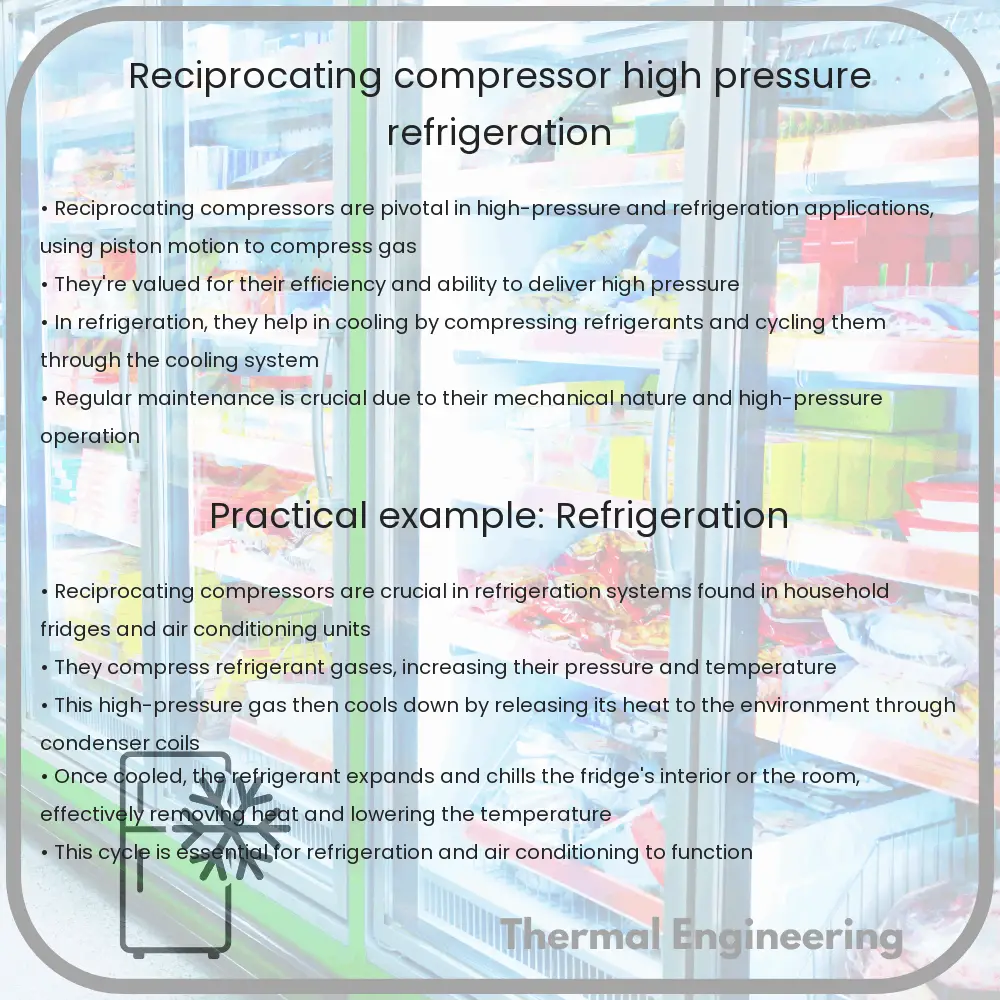Learn about reciprocating compressors, essential for industries like refrigeration and petrochemicals, focusing on their design, operation, and applications.

Understanding Reciprocating Compressors in High Pressure and Refrigeration Applications
Reciprocating compressors are vital components in various industrial and refrigeration processes, playing a crucial role in controlling and maintaining desired pressure levels. Commonly found in industries such as oil and gas, refrigeration, and air conditioning, understanding how these machines work can provide a deeper insight into their essential function in modern engineering.
What is a Reciprocating Compressor?
A reciprocating compressor, also known as a piston compressor, is a mechanical device that increases the pressure of a gas by reducing its volume. This is accomplished through the reciprocating motion of a piston within a cylinder. As the piston moves downwards, it creates a vacuum, drawing the gas into the cylinder. As the piston moves upwards, the gas is compressed and then discharged into the output system at higher pressure.
Components of a Reciprocating Compressor
- Cylinder: The chamber where gas compression takes place.
- Piston: Moves reciprocally within the cylinder to compress the gas.
- Crankshaft: Converts the rotational motion into reciprocating motion.
- Valve: Manages the intake and discharge of gas in the cylinder.
- Connecting Rod: Links the piston to the crankshaft.
Types of Reciprocating Compressors
Reciprocating compressors can be single-stage or multi-stage. A single-stage compressor completes the compression cycle in a single stroke of the piston, making it suitable for lower pressure requirements. The multi-stage compressor, by contrast, uses multiple pistons in a series, each dedicated to a stage of compression, allowing it to achieve much higher pressures ideal for heavy-duty applications.
Applications in High Pressure and Refrigeration
- Refrigeration: Reciprocating compressors are commonly used in refrigeration systems to compress refrigerants and maintain the required temperature in refrigerated spaces or appliances.
- Gas Transmission: High pressure reciprocating compressors are essential for the natural gas industry, where they are used to transport gas along pipelines over long distances.
- Petrochemical and Oil Refineries: These compressors compress raw natural gas and facilitate its purification and transportation.
- Auto Industry: Used in air brake systems for heavy-duty vehicles and compressing air in vehicle workshops.
Design Considerations for Efficiency and Reliability
Ensuring the efficiency and reliability of a reciprocating compressor involves several key considerations:
- Pressure Requirements: The design must accommodate the maximum and minimum system pressures.
- Gas Properties: Different gases have different thermodynamic properties that affect compressor design, such as corrosiveness or condensation risks.
- Temperature Control: Effective cooling systems are necessary, especially in multi-stage compressors, to manage the heat generated during gas compression.
- Vibration and Noise Reduction: Reciprocating compressors generate significant vibration and noise, and appropriate measures should be in place to mitigate these effects.
- Maintenance Needs: Easy access to wear-prone components and robust design are critical for reducing maintenance costs and extending the lifespan of the equipment.
Conclusion
Reciprocating compressors are indispensable in both general-purpose applications in industries and specialized areas such as refrigeration and high-pressure systems. Their ability to effectively increase gas pressure by simple mechanical motion, coupled with the adaptability to different gas types and conditions, makes them a fundamental part of modern industrial operations. Understanding the operational mechanics, design considerations, and applications help in appreciating the critical role played by these devices in various sectors.